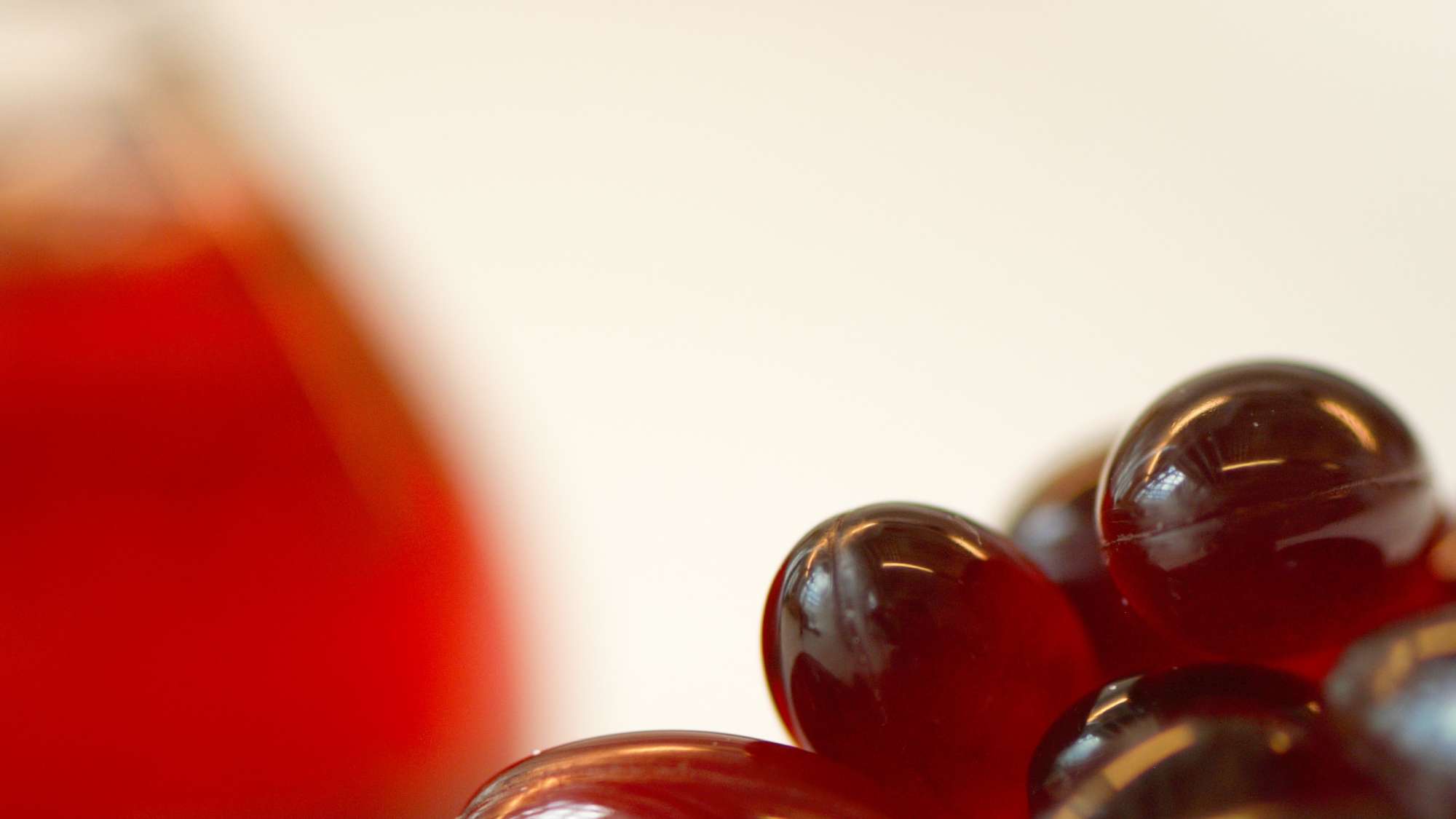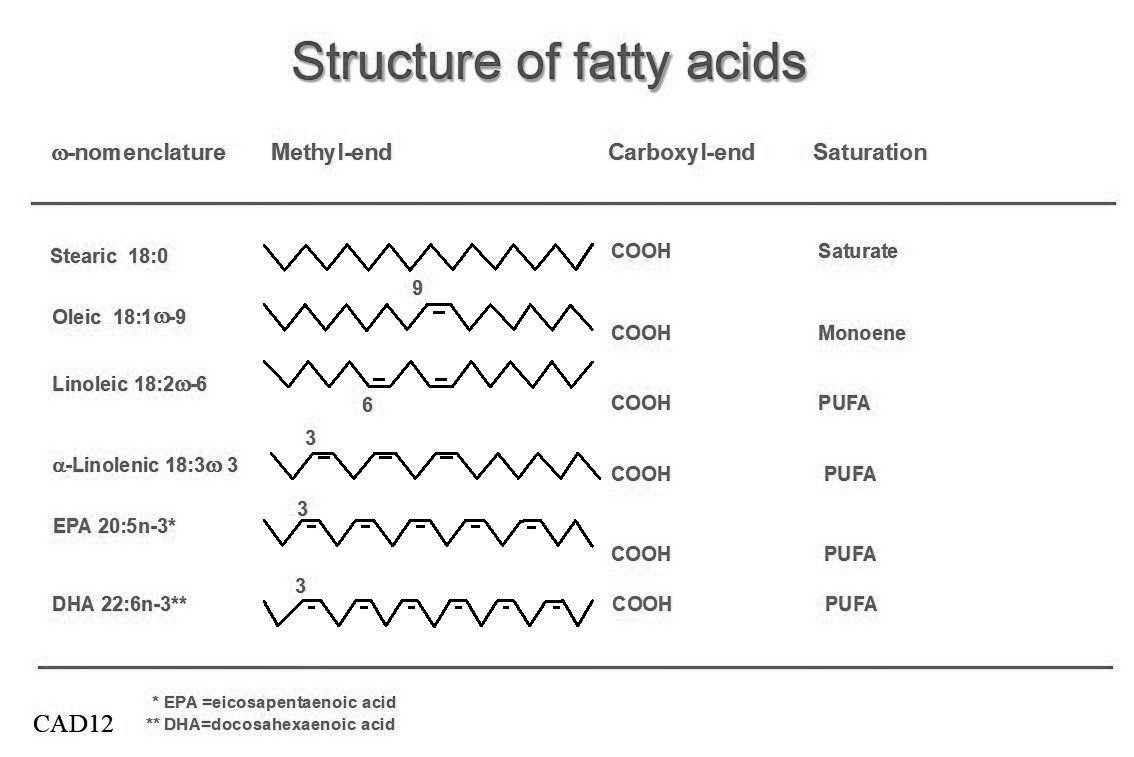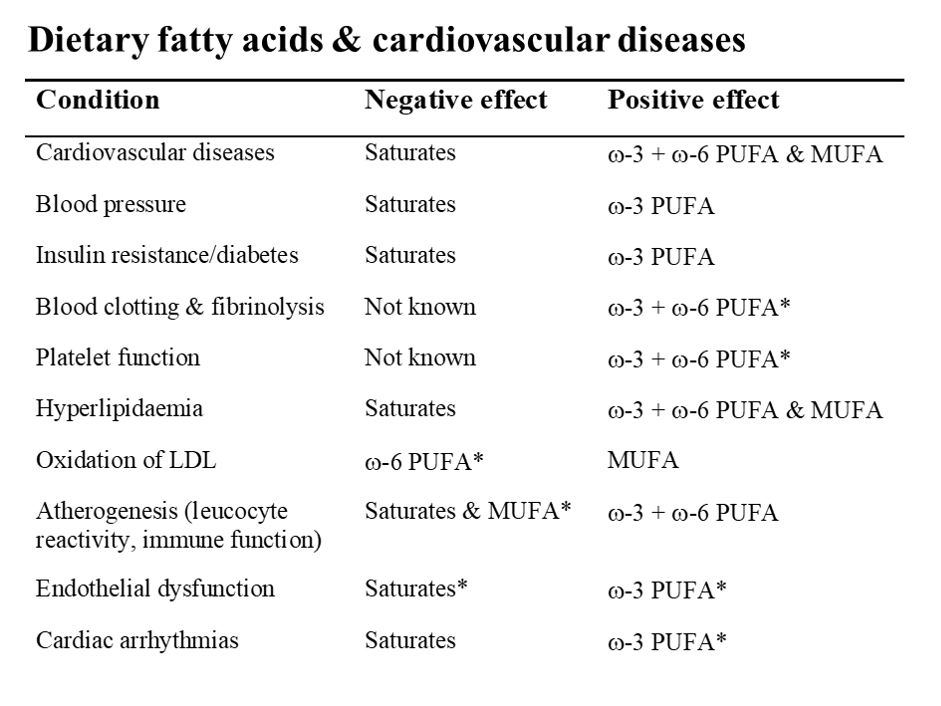Fat matters – Lipids and health
Dietary fats (also called lipids) are essential for maintaining good overall health. Fat provides body energy, protects organs, supports cell growth, keeps cholesterol and blood pressure under control, and helps your body absorb vital nutrients. Type of fats and fatty acids in foods, supplements, and in biological samples like blood, can be monitored in several ways. Vitas offers a wide range of analytical methods for lipids and fatty acids. Learn more about fats and different fatty acids in this article.
Large amounts and important
Fatty acids account for more than 90 % of fats in the diet as well as in the body, and they dominate as energy stores in the body (> 90% of total energy). Fat is very energy dense and fatty acids are essential both as energy source, transport of energy, building blocks in cells and complex lipids, they are precursors of signal molecules and can regulate gene expression.
Structure
Fatty acids can be short chain (1-5 carbon atoms mostly produced in the gut by some bacteria), medium chain (6-12 carbon atoms), and long chain fatty acids (7-34 carbon atoms). The most common fatty acids in foods as well as in the body contain 12 to 22 carbon atoms and have from none to 6 double bonds, with quite different biological properties. Most unsaturated fatty acids belong to either the omega-6 or the omega-3 fatty acid family, depending on the position of the first double bond counted from the methyl end of the fatty acid (Figure 1 next section).
Biological effects
The general rule is that saturated and trans-unsaturated (asymmetric distribution of hydrogen atoms at double bonds created in the gut of ruminants and in old fashioned margarine factories) affect many metabolic pathways in a bad way, whereas polyunsaturated have many beneficial effects. Stearic fatty acid (18 carbon atoms and no double bonds = 18:0) is saturated – all possible binding sites are filled with hydrogen (Figure 2 next session). This saturated fatty acid does not have any negative effects on blood cholesterol level in contrast to the other saturated fatty acids. Linoleic acid (18 carbon atoms, 2 double bonds and the first placed between carbon atom 6 and 7 counted from the methyl group; 18:2 n-6) is the most common polyunsaturated fatty acid and have a strong cholesterol reducing effect.
Omega 3 fatty acids are special
There are three common omega 3 fatty acids – the most common in our diet is alpha-linolenic acid (18:3 n-3), which is found in soybean oil, rapeseed oil, and many types of soft margarines. Eicosapentaenoic acid (EPA = 20:5 n-3) and docosahexaenoic acid (DHA = 22:6 n-6) are the most common polyunsaturated fatty acids in fatty fish (salmon, trout, herring, mackerel, and sardines). These omega 3 fatty acids have gotten a lot of attention because many studies show that they are important building blocks in cell membranes or precursors for signal molecules in many tissues, and they have many beneficial effects (Table 1 next section).
Take home message
Reduce intake of saturated and trans fatty acids coming mostly from fatty milk- and meat products, whereas polyunsaturated fatty acids from soybean and rapeseed oils should be used instead. In addition, omega 3 fatty acids should be in the diet from fatty fish, cod liver oil, or other food supplements, to secure a balanced intake of fatty acids.
Fatty acids – the extensive story
Fatty acids account for more than 90 % of fats in the diet as well as in the body. Fatty acids are present as free and parts of complex lipids like tri-, di, and monoacylglycerols, and cholesteryl esters. Fatty acids play many key roles in metabolism: they provide a major part of metabolic fuel, they are stored especially in adipose tissue and transported between tissues, essential building blocks in all cellular membranes, and they regulate expression of several genes (Table 1). In addition, dietary lipids provide polyunsaturated fatty acids (PUFAs) that can alter fluidity of membranes and be precursors for powerful signal molecules like eicosanoids. As part of complex lipids, fatty acids are also important for thermal and electrical insulation, and for mechanical protection. Moreover, free fatty acids and their salts may function as detergents due to their bipolar (partly water- and lipid-soluble) properties, and they are essential components of micelles (important for fat absorption in the intestine.
Functions of fatty acids in the body
Store energy – high energy density (37 kJ = 9 kcal/g fat)
Transport energy in blood lipids like triacylglycerol in lipoproteins
Components of cell membranes like phospholipids
Polyunsaturated fatty acids can alter/increase fluidity of cell membranes
Modify protein function by direct binding
Peroxides of fatty acids can influence biological processes
Thermal, electrical, and mechanical insulation/protection
Precursors of signal molecules like eicosanoids
Gene regulation (transcription)
Fatty acid structure
Fatty acids are carbon chains with a methyl group (CH3) in one end of the molecule (designated omega, o) and a carboxyl group at the other end (Figure 1 and 2). The carbon atom next to the carboxyl group is called the α carbon, and the subsequent one the β carbon. The letter n is also often used instead of the Greek ω to indicate the position of the double bond closest to the methyl end. If a fatty acid has one or more double bonds (less hydrogen) they are named mono- or polyunsaturated fatty acids (PUFA), respectively.
Figure 1. Nomenclature for the structure of fatty acids. One way to describe fatty acids is related to the methyl (ω) end. This is used to describe the position of double bonds from the end of the fatty acid. n = number of carbon/hydrogen units. The letter n is also used to describe the w position of the first double bond counted from the methyl end.
The structures of some common types of fatty acids are given in Figure 2.
Figure 2. Structure of some fatty acids. Stearic acid is a trivial name for a saturated fatty acid with 18 carbon atoms and no double bonds (18:0). Oleic acid has 18 carbon atoms and one double bond in the ω-9 position (18:1 ω-9); common in olive oil. Eicosapentaenoic acid (EPA, 20:5 w-3) and docosahexaenoic acid (DHA, 22:6 ω-3) are the most common omega-3 fatty acids in fatty fish and cod liver oil.
PUFAs are produced only by plants and phytoplankton; they are essential to all higher organisms, including mammals and fish. ω-3 and ω-6 fatty acids cannot be interconverted, and both are essential nutrients. This means that we depend on them, and we have to get them in the diet. PUFAs can be prolonged or shortened with carbon atoms, and desaturated (extraction of hydrogen).
Where do we find different fatty acids?
Fatty acids represent 30–40% of total energy intake and the most important dietary sources are vegetable oils, dairy products, meat products, grain, and some (1-2 %) from fatty fish or fish oils. The most common saturated fatty acid in animals, plants and microorganisms is palmitic acid (16:0). Stearic acid (18:0) is a major fatty acid in animals and some fungi, and a minor component in most plants. Shorter-chain saturated acids with 8–10 carbon atoms are found in milk and coconut triacylglycerols. Oleic acid (18:1 ω-9) is the most common monounsaturated fatty acid. Linoleic acid (18:2 ω-6) is a major fatty acid in plant lipids. Arachidonic acid (20:4 ω-6) is a major component of membrane phospholipids throughout the animal kingdom, but very little is in the diet. α-Linolenic acid (18:3 ω-3) is found in soyabean oil, rape seed oils, and algae. EPA and DHA are major fatty acids of marine algae, fatty fish, and fish oils. DHA is found in high concentrations, especially in phospholipids in the brain, retina, and testes.
Biological effects of dietary fatty acids
Since the 1950ies it has been known that saturated fatty acids enhance plasma cholesterol, which is a causal risk factor for development of cardiovascular diseases like coronary hear disease. In the early 1970ies the Danish medical doctors Bang and Dyerberg described that Greenland Inuits had low levels of a certain blood lipoprotein fraction (very low density lipoproteins = VLDL) in spite of high intake of dietary fat characterized lots of marine ω-3 fatty acids, at the same time as having few cases of coronary heart disease. In Table 1 are listed biological effects of different types of dietary fatty acids on some common conditions in modern societies.
Table 1. Saturated fatty acids tend to have negative influence on several conditions of importance for development of cardiovascular diseases. PUFA = polyunsaturated fatty acids; MUFA = monounsaturated fatty acids. * weak findings
Dietary advice on fatty acid intake
Reduce intake of saturated and trans fatty acids mostly from fatty milk- and meat products, whereas polyunsaturated fatty acids from soybean and rapeseed oils should be used instead. Although data on the required intake of essential fatty acids are relatively few, the adequate intake of linoleic acid (18:2 ω-6) and a-linolenic acid (18:3 ω-3) should be 2% and 1% of total energy, respectively. Present evidence suggests that 0.2–0.3% of the energy should come from very long-chain ω-3 PUFAs (EPA and DHA) to avoid signs or symptoms of deficiency. This corresponds to approximately 0.5 g of these ω-3 fatty acids per day, which is the minimum intake to avoid clinical symptoms of deficiency. It has been suggested that the ratio between ω-3 and ω-6 fatty acids should be 1:4 as compared to 1:10 in modern dietary habits, but the experimental basis for this is rather weak.
There are significant beneficial effects of additional intake of PUFA in general and EPA and DHA in particular. It is possible that the beneficial effects may be obtained at intakes as low as one or two fish meals weekly, but many of the measurable effects on risk factors are observed at intakes of 1–2 g/day of very long-chain ω-3 PUFA. If 1–2 g/day of EPA and DHA is consumed in combination with proper amounts of fruits and vegetables, and limited amounts of saturated and trans fatty acids, most people will benefit with better health for a longer time (Figure 3).
Figure 3. Reduce intake of foods containing high amounts of saturated and trans fatty acids. Enhance intake of foods with high amounts of PUFA (in particular ω-3 fatty acids), vitamin D and E.
Further reading
Rustan AC, Drevon CA. Fatty Acids: Structures and Properties. Encycloped Life Sciences 2005, https://www.researchgate.net/publication/227992501
Aryal S et al. Omega-3 fatty acids regulate plasticity in distinct hippocampal glutamatergic synapses. Eur J Neurosci 2019, 49, 40-50. doi: 10.1111/ejn.14224
Harris WS et al. Blood n-3 fatty acid levels and total and cause-specific mortality from 17 prospective studies. Nat Commun 2021, 12(1):2329. doi: 10.1038/s41467-021-22370-2
O’Keefe EL et al. Sea Change for Marine Omega-3s: Randomized Trials Show Fish Oil Reduces Cardiovascular Events. Mayo Clin Proc 2019, 94, 2524-33. doi: 10.1016/j.mayocp.2019.04.027
| Number | Method |
|---|---|
| [[ item.number ]] | [[ item.title ]] |









